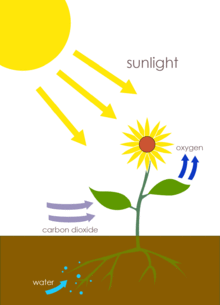What is Color Blindness?
Color vision deficiency or 'color blindness' is a hereditary condition usually passed down from the X chromosome. (This is why it is more common to hear about males being color blind more than females.) It causes those affected to not process color properly. There are red/green deficiencies and blue/yellow deficiencies, but then also types of deficiencies within those, etc.
What Types of Color Blindness Are There?
Anomalous Trichomancy - Meaning all three types of cone cells are slightly skewed, affecting vision. Within that there is protanomaly (reduced sensitivity to red light), deuteranomaly (reduced sensitivity to green light-- and the most common), and tritanomaly (reduced sensitivity to blue light, which is very rare).
According to Colorblindawareness.org:
"People with deuteranomaly and protanomaly are collectively known as red-green colour blind and they generally have difficulty distinguishing between reds, greens, browns and oranges. They also commonly confuse different types of blue and purple hues.
People with reduced blue sensitivity have difficulty identifying differences between blue and yellow, violet and red and blue and green. To these people the world appears as generally red, pink, black, white, grey and turquoise."
Dichromancy - People with this type of deficiency only have two types of cone cells in their retina, meaning they simply cannot perceive a certain section of color in the light section. Colorblindawareness.org says:
People with both red and green deficiencies live in a world of murky greens where blues and yellows stand out. Browns, oranges, shades of red and green are easily confused. Both types will confuse some blues with some purples and both types will struggle to identify pale shades of most colours.
However, there are some specific differences between the 2 red/green deficiencies.
Protanopia
Protanopes are more likely to confuse:-
1. Black with many shades of red
2. Dark brown with dark green, dark orange and dark red
2. Some blues with some reds, purples and dark pinks
3. Mid-greens with some oranges
Deuteranopes
Deuteranopes are more likely to confuse:-
1. Mid-reds with mid-greens
2. Blue-greens with grey and mid-pinks
3. Bright greens with yellows
4. Pale pinks with light grey
5. Mid-reds with mid-brown
6. Light blues with lilac
How is it Caused?
The reason for color vision deficiency is still being researched, but it is believed it can be caused by faulty cones, or a malfunctioning pathway from cone cells to the brain.
How Does it Work?
Color vision deficiency effects the cones in the retina which process light into color. There are three types of cone cells that interpret red, green, and blue respectively. When prompted, the brain can interpret the signals prompted from these cells to make your perceive color. For example, if you see something purple, your retina will stimulate the red and blue cone cells.
When someone s
Who Does it Effect?
1 in 12 males have color vision deficiency, whereas only about 1 in 200 females do.
PERSONAL REFLECTION
I definitely found reading this as a bit of enlightening experience. Not only is my dad colorblind, but it's also kind of hard to find information on what it exactly is and how it works. I found it super interesting to be able to read this much about something so common.
























